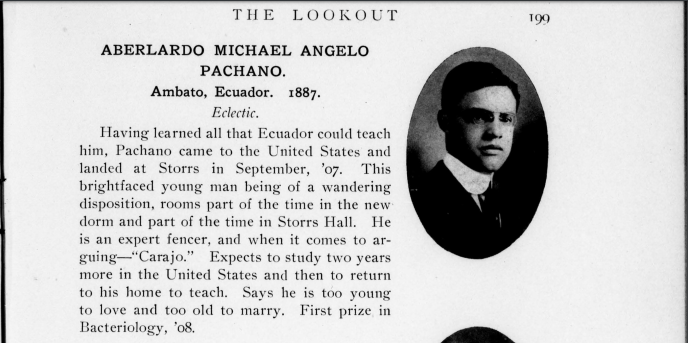Today, when the student body at the University of Connecticut includes nearly 2,000 international students from more than 100 countries, it’s easy to take for granted UConn’s status as a global destination.
This wasn’t always the case, though.
In the early years, when it was still known as Storrs Agricultural College, it was rare for students from outside Connecticut to enroll in classes here, let alone from outside the country. It was so rare, in fact, that an early student organization on campus was established for the benefit of undergraduates from Massachusetts to help them get acquainted with the area and feel less homesick.
All of that changed in September, 1907, when Aberlardo Pachano, from the city of Ambato in Ecuador, arrived on campus. Pachano graduated in 1909 (in those days, two-year degrees were more common at the University than bachelor’s degrees) and the Lookout – the student publication that was a forerunner of today’s Daily Campus – described him this way:
“Having learned all that Ecuador could teach him, Pachano came to the United States and landed at Storrs in September ’07.” The article noted that Pachano planned to study elsewhere in the U.S. before returning home, in hopes of becoming a teacher.
While Pachano’s arrival didn’t exactly open the floodgates for international students, he was followed in quick succession by UConn’s first international student from Europe, Thomas Constantinoff of Bulgaria, who graduated in 1910, and the first student from Asia. Kumao Inouye, from Tokyo, graduated in 1911 and brought home with him a crate of Storrs bullfrogs, which he hoped to breed back in Japan.
In this excerpt from the latest episode of UConn 360, we learn more about these three students, and how they paved the way for thousands of young men and women from all around the world who have come to UConn in the generations since.



